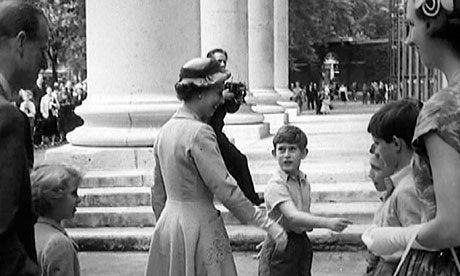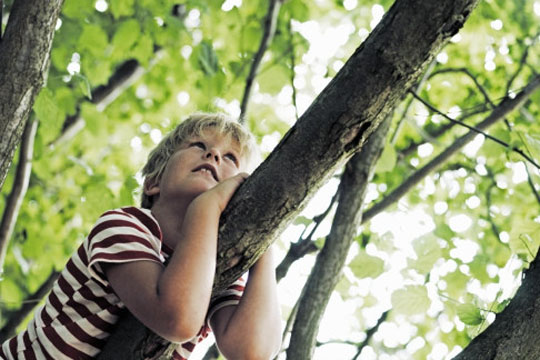
Why do children lie?
Children tell lies for many reasons, depending on the situation
and their motivation. Children might lie to:
- cover something up, hoping to avoid consequences or punishment
- explore and experiment with their parents’ responses and reactions
- exaggerate a story or impress others
- gain attention, even when they’re aware the listener knows the truth
- manipulate a situation or set something up – for example, saying to grandma, ‘Mum lets me have cakes before dinner’.
When do children start lying?
Children can learn to tell lies from an early age, usually by
around three years of age.
This is when they begin to work out that grown-ups are not mind
readers, and that they can give people false information – perhaps
to get out of trouble or to cover up.
Generally, children lie more between 4-6.
They may become more skilled at telling a lie through their body
language or being good actors, but will often implicate themselves if
pushed to explain further. Studies suggest that four-year-olds can
lie about once every two hours, and six-year-olds about every 90
minutes.
When children reach school-age,
they lie more often and can do so more convincingly. The lies also
become more sophisticated, as their vocabulary grows and they better
understand how other people think. By eight, children can lie
successfully without getting caught out.
What to do when your child lies
Be positive, and emphasise
the importance of honesty in your family.
You can tell your child that you appreciate being told the truth
and don’t like it when she lies to you. For example, try saying
‘When you don’t tell me the truth, I feel sad and disappointed’.
Generally, it’s better to teach children the value of telling
the truth than to punish them for minor misdeeds. Praise your child
for honesty, even if it sometimes takes you a while to get it.
Children like to make things
up. They exaggerate stories to give them a bit more ‘flavour’. In
fact, pretending and imagining are important to your child’s
development.
Tips for encouraging honesty
Once children grow old enough to understand the difference between
true and not true, it's good to encourage and support them in telling
the truth.
- If your child is telling you something that is imaginary or make-believe, you can simply go along with it. Pretending and imagining are important to your child’s development. For example, your child might tell you that she’s a super-hero. You could respond by asking her about her super-powers.
- Help your child avoid getting into situations where he feels he needs to lie. For example, you see your child has spilled some milk. You could say to him, ‘Did you spill the milk?’ He might lie and say no because he thinks he’s about to get into trouble. To avoid this situation, you could just say, ‘I see there’s been an accident with the milk. Let’s clean it up’.
- Make sure that you have clear rules about what is acceptable behaviour in your home. Children are more likely to behave within acceptable boundaries if clear rules are enforced.
- When your child owns up to doing something wrong, praise her for being honest. Say things like, ‘I am really glad you told me the truth. I like it when you are honest’. In fact, it’s important that your child knows that you won’t get upset if she owns up to something.
- If your child is deliberately misleading you, let him know that lying is not acceptable. Explain why it’s not a good thing and that you might not be able to trust him in future. Then use appropriate consequences to deal with the behaviour that led to the lie. For example, if your child drew on the wall, get him to help you clean it up.
- Try to deal separately with the lying and the behaviour that led to it. First, deal with the lying the way you said you would (for example, use time-out). Then have a look at what caused the behaviour behind the lie. If your child lied to get your attention, consider more positive ways you could give her attention. If she lied to get something she wanted – for example, toys from grandma – consider a rewards system that lets her earn special treats.
- Try to avoid telling your child that he is a ‘liar’. Labelling him in this way might negatively affect his self-esteem, or lead to even more lying. That is, if your child believes he’s a liar, he might as well as keep lying. It’s more helpful to label and talk about your child’s actions and behaviours.
- One way to discourage children from obvious lying is to make
a joke, or exaggerate the untrue statement. For example, a young
child might explain a broken toy by saying, ‘A man came in and
broke it’. You could say something silly like, ‘Why didn’t you
invite him in for dinner?’ Continue the joke a bit longer until
the child ‘confesses’. This way, you uncover the lie and teach a
lesson without any need for discipline or conflict.
More tips: older children
- As children get older, lies can become a habit. If the lying is happening a lot, make a set time to sit calmly with your child. Talk to her about how her lying makes you feel, how it affects your relationship with her, and what it might be like if family and friends stop trusting her.
- Always tell your child when you know for sure that he is not telling the truth. Your child needs to know that honesty is important to you. But try to avoid asking him all the time if he is telling the truth.
- It might seem like no matter what you do, your child keeps lying. Stick with it! Research says that it’s not until children are seven or older that their parents’ efforts pay off. Children whose parents discipline them for lying and praise them for telling the truth lie less as they grow up.
- Stay involved in your child’s life and encourage her to be
truthful with you. Children of all ages who have good communication
with their parents and talk with them about what they’re doing are
less likely to engage in antisocial behaviour.
Certainly there are times when a child
is very young that certain information can be harmful to her. Details
about horrific events or deaths of loved ones can cause some trauma
in your child. Parents need to use their best judgment regarding what
their child can and cannot handle. However, parents should avoid
keeping details from her just because they don’t want to have to
deal with the pain she might feel from the news. With each
challenging event that parents take head on, offering the
encouragement their child needs will help her grow emotionally
stronger. Then, when the most difficult realities of life hit her,
she will be prepared to face them.









